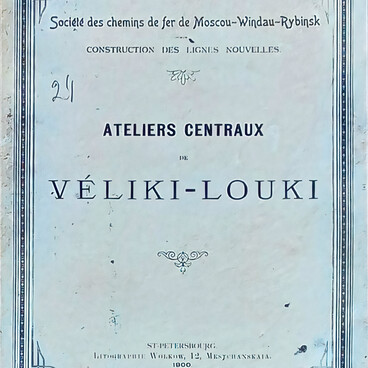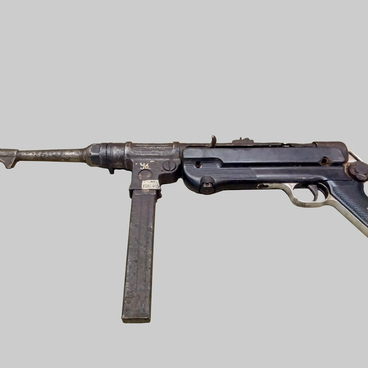The piano on display at the museum was made in the 19th century. In the center of its wooden body, in a frame, there is a bas-relief depicting Mozart. The lower part of the piano is decorated with wood carvings.
In Russia, the first keyboard instruments appeared no earlier than the 16th century. But as early as 1490, the organ player GiovAnni SalvatOre gave concerts in Moscow. Almost a hundred years later, Boris GodunOv ordered to bring musical instruments for the Moscow court. And when they arrived, the tsarina ‘was especially amazed at the organs and clavichords, gilded and decorated with enamel, which she had never seen before; she marveled at their loud and musical sound. Thousands of people gathered around the palace; they wanted to listen to music too’, recalled the English nobleman Jerome Horsey, who carried out Godunov’s instructions.
Neither the church nor the Moscow court encouraged playing musical instruments. Only under tsar Alexis did some boyars acquire Western European musical instruments.
The turning point in the development of Russian musical culture came in the first quarter of the 18th century. In 1729, the Saint Petersburg Vedomosti reported: “We inform curious lovers of choral and chamber music that Danzig has: <…> an excellent harpsichord… an excellent clavichord of excellent workmanship… The owner of these instruments is Theophil Andreas Volkmann, organist of the main church of Saint Catherine in Danzig”.
Four years after these mentions, the instruments could already be bought without leaving Saint Petersburg, from bell-maker Foerster, who announced that he had “two chamber harpsichords with a good sound, for sale”.
In the 1740s, several manufacturers offered grand pianos, clavichords and pantalons. The first mentions of musical instruments called “pianos” appeared in 1771. They were published in the same Saint Petersburg Vedomosti: “On Vasilievsky Island in the 8th line, between the embankment and the great prospect, in the house of Secretary Arents, merchant Troyaznen sells a completely new harpsichord made by one of the glorious masters, called a piano”. Clavier manufacturer Shkokha offered harpsichords, claviers and an English mahogany piano. The craftsman undertook to “repair them for a whole year for free”.
In the late 18th-early 19th centuries, there were many craftsmen in Saint Petersburg and Moscow who made keyboard instruments, repaired and sold them. Connoisseurs already had an understanding of quality, brands and firms. Nevertheless, there were not enough instruments. The workshops could no longer meet the demand for pianos. Large enterprises were needed, which eventually appeared.
In Russia, the first keyboard instruments appeared no earlier than the 16th century. But as early as 1490, the organ player GiovAnni SalvatOre gave concerts in Moscow. Almost a hundred years later, Boris GodunOv ordered to bring musical instruments for the Moscow court. And when they arrived, the tsarina ‘was especially amazed at the organs and clavichords, gilded and decorated with enamel, which she had never seen before; she marveled at their loud and musical sound. Thousands of people gathered around the palace; they wanted to listen to music too’, recalled the English nobleman Jerome Horsey, who carried out Godunov’s instructions.
Neither the church nor the Moscow court encouraged playing musical instruments. Only under tsar Alexis did some boyars acquire Western European musical instruments.
The turning point in the development of Russian musical culture came in the first quarter of the 18th century. In 1729, the Saint Petersburg Vedomosti reported: “We inform curious lovers of choral and chamber music that Danzig has: <…> an excellent harpsichord… an excellent clavichord of excellent workmanship… The owner of these instruments is Theophil Andreas Volkmann, organist of the main church of Saint Catherine in Danzig”.
Four years after these mentions, the instruments could already be bought without leaving Saint Petersburg, from bell-maker Foerster, who announced that he had “two chamber harpsichords with a good sound, for sale”.
In the 1740s, several manufacturers offered grand pianos, clavichords and pantalons. The first mentions of musical instruments called “pianos” appeared in 1771. They were published in the same Saint Petersburg Vedomosti: “On Vasilievsky Island in the 8th line, between the embankment and the great prospect, in the house of Secretary Arents, merchant Troyaznen sells a completely new harpsichord made by one of the glorious masters, called a piano”. Clavier manufacturer Shkokha offered harpsichords, claviers and an English mahogany piano. The craftsman undertook to “repair them for a whole year for free”.
In the late 18th-early 19th centuries, there were many craftsmen in Saint Petersburg and Moscow who made keyboard instruments, repaired and sold them. Connoisseurs already had an understanding of quality, brands and firms. Nevertheless, there were not enough instruments. The workshops could no longer meet the demand for pianos. Large enterprises were needed, which eventually appeared.



